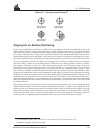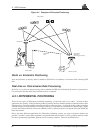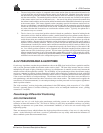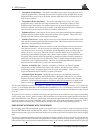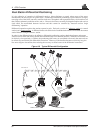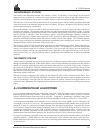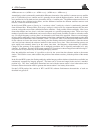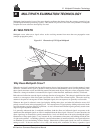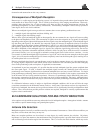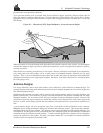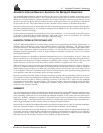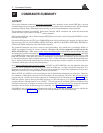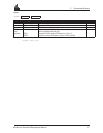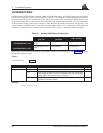
B Multipath Elimination Technology
MiLLennium Command Descriptions Manual 61
B MULTIPATH ELIMINATION TECHNOLOGY
Multipath signal reception is one of the most plaguing problems that detracts from the accuracy potential of GPS
pseudorange differential positioning systems. This section will provide a brief look at the problems of multipath
reception and some solutions developed by NovAtel.
B.1 MULTIPATH
Multipath occurs when an RF signal arrives at the receiving antenna from more than one propagation route
(multiple propagation paths).
Figure B-1 Illustration of GPS Signal Multipath
Why Does Multipath Occur?
When the GPS signal is emitted from the satellite antenna, the RF signal propagates away from the antenna in many
directions. Because the
RF signal is emitted in many directions simultaneously and is traveling different paths,
these signals encounter various and differing natural and man-made objects along the various propagation routes.
Whenever a change in medium is encountered, the signal is either absorbed, attenuated, refracted, or reflected.
Refraction and reflection cause the signals to change direction of propagation. This change in path directions often
results in a convergence of the direct path signal with one or more of the reflected signals. When the receiving
antenna is the point of convergence for these multipath signals, the consequences are generally not favorable.
Whenever the signal is refracted, some signal polarity shifting takes place; and when full reflection occurs, full
polarity reversal results in the propagating wave. The consequences of signal polarity shifting and reversal at the
receiving antenna vary from minor to significant. As well, refracted and reflected signals generally sustain some
degree of signal amplitude attenuation.
It is generally understood that, in multipath conditions, both the direct and reflected signals are present at the
antenna and the multipath signals are lower in amplitude than the direct signal. However, in some situations, the
direct signal may be obstructed or greatly attenuated to a level well below that of the received multipath signal.
Obstruction of direct path signals is very common in city environments where many tall buildings block the line
of sight to the satellites. As buildings generally contain an abundance of metallic materials,
GPS signal reflections
are abundant (if not overwhelming) in these settings. Obstructions of direct path signals can occur in wilderness
settings as well. If the
GPS receiver is in a valley with nearby hills, mountains and heavy vegetation, signal
B MULTIPATH ELIMINATION TECHNOLOGY



